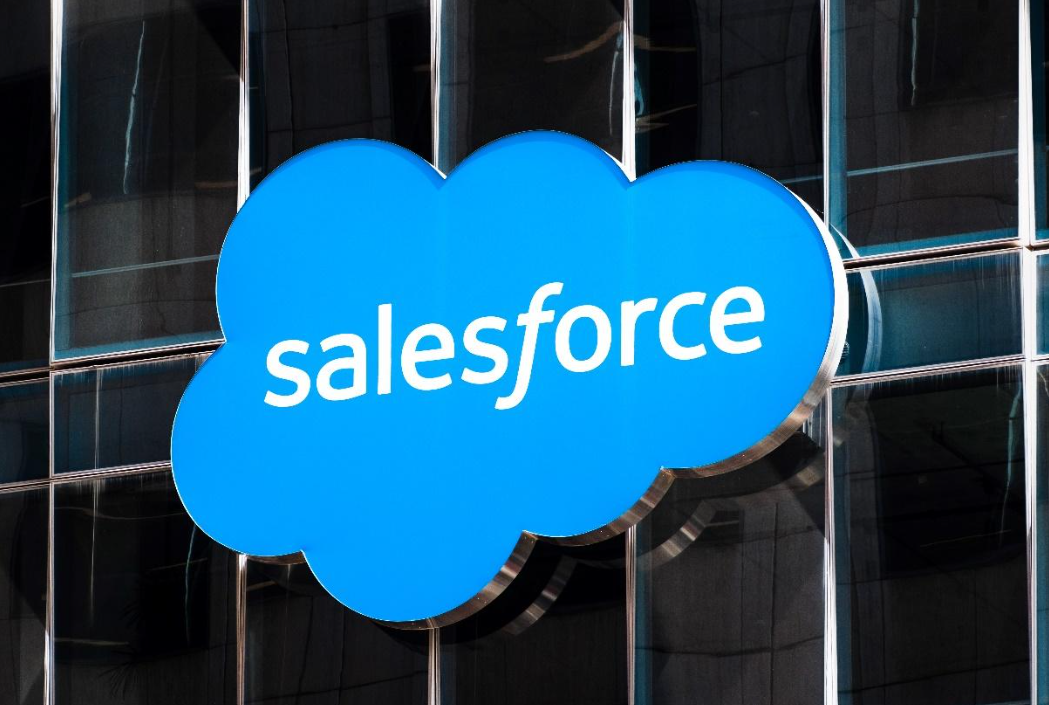It has been a difficult period for highly valued tech names. Dow component Salesforce, Inc (CRM) has been one of the worst-performing mega-cap growth names as its business model around M&A activity and stock-based compensation has stretched valuations.
Shares of CRM were down 37% in 2022 heading into its Tuesday afternoon earnings report. This compares to a 23% decline in the Nasdaq.
The company posted solid results over the past two years as the globe went into a digital transformation following the arrival of the COVID pandemic. CRM’s tools proved invaluable for a corporate world adjusting to a new reality.
This also led to concerns that customers may have front-loaded investments that would lead to an eventual slow down of business at CRM. The company stepped into the earnings confessional with a beaten-down stock and low expectations.
How did they perform in the first quarter?

Q1 Revenue rose 24% y/y to $7.41 billion, slightly better than $7.38 billion consensus. The results included an FX headwind of approximately $109 million. The volatility in currencies remains a key issue for the company.
Remaining performance obligation (RPO) at quarter-end increased 20% y/y to approximately $42.0 billion. RPO is the best measure of durability for the company’s business model as it reflects future revenue under contract.
Operating cash flow increased 14% y/y to $3.7 billion. Operating margins clocked in at 17.6%, in line with expectations.
The guidance raised some red flags as CRM projected Q2 EPS in the range of $1.01-1.02, below consensus expectations of $1.14. CRM forecast Q2 revenues in the range of $7.69-7.7 billion or approximately 21% y/y revenue growth, below analyst expectations. FX will slow the top line by $200 million in the quarter. RPO growth is projected to rise 15% y/y which is a slowdown from the 21% posted in Q1.
The full-year outlook was mixed as CRM raised its EPS guidance to $4.74-4.76 from the prior outlook of $4.62-4.64. It lowered its sales outlook to the range of $31.7-31.8 billion from $32.0-32.1 billion. It is odd to see a company lower the full-year outlook following a beat. Perhaps it is simply the company providing itself with some insulation given the uncertain backdrop.

The reason for the downbeat guidance is important as it was due to foreign exchange headwinds rather than eroding business conditions. To wit, the Japanese yen has declined 12% against the dollar over the past couple of months. This is fantastic if you are traveling to Japan for vacation, but it is a problem for companies who roll revenue dollars from yen into greenbacks.
CRM Revenue by Region:
- Americas 67%
- Europe 23%
- Asia Pacific 10%
CRM’s primary exposure is to the euro, British pound, yen, and Australian dollar.
CRM forecasts FY23 FX headwinds to be approximately $300 million. This is on top of a prior prediction of $300 million, resulting in a negative impact of $600 million for the year. The updated FY23 revenue guidance stands at $31.7-31.8 billion or approximately 20% revenue growth.
The jewel of the report was the company raising its operating margins by 40 basis points to 20.4%. This was a pleasant surprise for analysts. The 170-basis point improvement is driven by disciplined decision-making across the organization. The company remains committed to consistent margin and cash flow growth.
Salesforce is headed for another record year for cash flow generation. It reiterated its FY23 operating cash flow guidance of 21-22% y/y growth.
CRM’s regional revenues and expenses are generally in the same currency. This allows it to maintain profitability despite the FX volatility on the top line.
Importantly, the demand environment for its Customer 360 platform remains incredibly strong. CRM witnessed steady demand across its clouds, industries, and regions. The company continues to benefit as customers invest in digital transformations. There remains a real sense of urgency with its customers as evident by clients spending more than $100K increasing 45% y/y.
CRM has a proven track record in navigating challenging environments. Salesforce was able to produce in an uncertain economic environment with deeper FX headwinds than anticipated. The commentary around demand is encouraging.
The past 20+ months have triggered a faster change in customer-focused systems than ever. This pace will continue to increase in the digital age, driving sustained growth for the front-office software market.
The reaction to the stock is encouraging. The better-than-feared results led to a 12% rally in shares. This strength was able to mask some of the broader market weakness we saw in the tech sector.
Shares of CRM will need to battle through key resistance levels with the downward trend lines coming into play around $180. It also has the 200-sma ($194) lurking.
Shares remain expensive as CRM trades at 30x forward earnings and 32x cash flow. But we continue to see margin improvement which should help boost investor confidence in a rising rate environment.
Investors will need more time to assess the overall economic environment but CRM appears to be insulated given the need for its products in the digital transformation. This means that investors should hold positions and expect sideways consolidation in shares in the $160-190 area until we get more evidence on the economy.
Our suggestion is that investors with long-term investment horizons should start to accumulate shares of this best-in-breed cloud software company as it continues to see strong demand and remains under the leadership of one of the best CEOs in the game in Marc Benioff.



